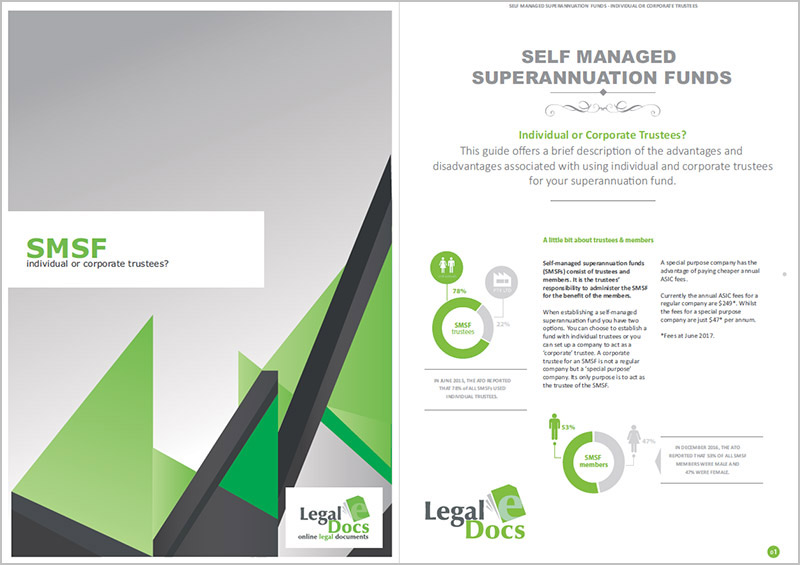WHAT YOU NEED TO KNOW ABOUT HYBRID TRUSTS
.
What is a hybrid trust?
“Hybrid trust” is not a defined term. A “hybrid trust” generally means a trust that combines some of the features of a fixed trust with some of the features of a non-fixed trust, ie a discretionary trust, to create a new form of trust that better suits some commercial applications. Different lawyers do this in different ways.
The most common approach is to allocate an agreed number of units to each unit holder. Like unit trusts, the units entitle the unit holder to a fixed proportion of the net income of the trust each year. Typically these units also entitle the unit holder to a fixed proportion of any capital distributions. If nothing else happens the hybrid trust works like a fixed trust: each unit holder is entitled to a fixed percentage of the trust’s income and capital gains each year and must include this amount in their assessable income for tax purposes. For example, if net income is $1,000, and there are 100 units owned equally by each of Crosby, Stills, Nash and Young, each of Crosby, Stills, Nash and Young are entitled to $250 and they must each include $250 in their income tax return each year.
Sometimes hybrid trusts operate this way year after year, just like a fixed trust. But circumstances may arise where distributing net income between unitholders in their proportions is not optimal. A more discretionary approach may be needed.
The hybrid trust deed contains some special rules to help out here.
First, if each unitholder agrees, net income may be distributed other than proportionally. For example, it may be instead agreed that each of Crosby and Stills are entitled to say 30% of net income, and each of Nash and Young are entitled to 20%. This means each of Crosby and Stills receive $300 and must include $300 in their income tax return. And each of Nash and Young receive $200 and must include $200 in their income tax return.
Second, at the request of an individual unitholder, net income may be distributed instead to certain related persons, typically family members such as partners and children, in much the same way as a discretionary trust. This means, for example, Crosby may nominate a family member, such as Mitchell, to receive all or part of their net income.
A draft minute of a meeting of directors recording this decision is included in the appendix.
When will a hybrid trust be used?
Hybrid trusts are particularly useful where:
1. two or more unrelated persons co-own a business or an investment and
2. there is a potential to distribute income and capital gains and tax credits and rebates to related persons.
Advantages of hybrid trusts
More particularly, the advantages of a hybrid trust include:
1. they are cheap to set up and run each year. They eliminate the need to set up multiple entities for each owner and prepare multiple accounts, BASs and tax returns each year;
2. unit holders can claim a deduction for the interest incurred on the cost of their units. A
beneficiary of a discretionary trust is not able to do this. This has an intrinsic tax planning value, but also means it is less likely for a trust to have “quarantined” interest losses ie losses that are locked up and cannot be used by related persons. This can happen, for example, if a trust borrows money to negatively gear an investment property, or if a trading trust incurs business losses;
3. it is easy for new owners to join and for old owners to leave the structure. It is a simple sale of unit transaction. This can be completed efficiently with low legal fees, if any;
4. because the discretionary beneficiaries are defined by their relationship with the unit holder, a transfer of a unit or an issue of a unit to a new unit holder automatically introduces a new class of beneficiaries without the need to amend documents or, for example, end one partnership and start a new one, with the attendant tax consequences and extra costs;
5. the interests of each owner are protected and are not subject to a discretionary power on the part of the trustee. The resolutions to distribute net income other than proportionately must be signed by each unit holder: this protects each unit holder from unfair treatment. This means the unit’s capital value is preserved and it has a market value and can be bought and sold. This compares to a beneficiary of a discretionary trust who only has a mere expectancy that the trustee may exercise a discretion in its favour. Such a beneficiary does not have a separate asset recognised at law; and
6. the difficulties experienced with section 160ZM of the Income Tax Assessment Act 1936 (“the Act”), where non-assessable income erodes indexed cost base or riggers a deemed capital gain, can be avoided. This is done by allocating this income to a discretionary beneficiary. This means, for example, problems with (under-capitalised) unit trusts realising tax exempt capital gains on the sale of business goodwill can be avoided.
All the other tax laws applying generally to trusts, including the loss trust rules and the restrictions on channelling franking credits, apply.
Disadvantages of hybrid trusts
A hybrid trust cannot distribute capital or revenue losses to its unit holders. This means a trust incur a net loss its beneficiaries will not be able to offset that loss against any other assessable income that they may derive. The position would be different if, for example, a partnership structure was used: partners can offset partnership losses against other income.
Expert advice should be sought if it a trust expects to make a revenue loss or a capital loss for tax purposes. It may be wise to have debt held at the unit holder level, rather than the trust level, to avoid negative gearing type losses being locked up in the trust.
Land tax and hybrid trusts
Complex land tax rules may apply where a hybrid trust owns significant real estate, particularly under the NSW and Victorian Special Trust rules.
Stamp duty and hybrid trusts
Complex stamp duty rules may apply where a hybrid trust owns significant real estate, particularly when beneficial ownership changes.
Income tax and hybrid trusts
Hybrid trusts are efficient tax planning vehicles. Usually hybrid trusts do not pay tax themselves. Instead the net income flows through and is attributed to the unit holders. The amount of tax paid by the unit holders depends on their individual tax profiles. For example, a unit holder with $100,000 of carried forward tax losses will not pay tax on a distribution of $10,000. This is because the unit holder’s taxable income will still be less than nil (ie $100,000 less $10,000, ie a $90,000 carry forward loss). Another unit holder in the top marginal tax bracket may pay up to $4,500 tax, plus Medicare levy on a distribution of $10,000.
The trust deed is drafted so franking credits, dividend rebates, and different classes of income, capital gains (and other tax amounts with particular tax consequences) flow through the trust to the appropriate unit holders.
The taxation of trusts is complex. Particular complications may arise with the Small Business CGT concessions and carry forward tax losses. It’s not possible to cover the field in a few short pages, particularly as the rules change frequently over time. This means expert advice should be sought before making any tax sensitive decisions about hybrid trusts.
The ATO generally accepts hybrid trusts but is concerned about some gearing arrangements. In summary, expert advice should be sought before claiming large interest deductions on the cost of units and/or distributing significant net income to someone other than the original unitholder. As a general proposition interest deductions and net income distributions must match up. Discretionary distribution powers should not be used for tax avoidance purposes.
Do you need a unitholders’ agreement?
Most hybrid trusts with unrelated unitholders need a unitholders’ agreement. This agreement will set out a dispute resolution mechanism, basic rules concerning the ownership and sale of units and, importantly, which unitholder does what, where and when.
The best time to do this is at the beginning while everyone is still friends.
DRAFT MINUTE OF A MEETING OF THE DIRECTORS OF A TRUSTEE COMPANY TO RECORD A NON PROPORTIONAL DISTRIBUTION OF NET INCOME BY A HYBRID TRUST
MINUTE OF A MEETING OF THE DIRECTORS OF DE JA VU TRUSTEE PTY LTD HELD AT THE REGISTERED OFFICE ON 30 JUNE 2022
Present
Crosby, Stills, Nash and Young
Chairperson
Stan Nash was elected chairperson
Capacity
The meeting related to the company’s capacity as trustee of the De Ja Vu Hybrid Trust (“the Trust”).
Previous minutes
The minutes of the previous meeting were read and affirmed as correct.
Non-proportional distribution of net income
The Chairperson informed the meeting the Unitholders had unanimously requested that the Trust’s net income not be distributed directly to the unitholders in proportion to their units at 30 June 2022 and instead be distributed as follows:
| Unitholder
|
Related person
|
% net income
|
| Bill Young
|
Fred Young (son)
|
20%
|
| Stan Nash
|
Stan Nash (self)
|
20% |
| Kelvin Crosby
|
Betty Crosby (daughter)
|
30%
|
| Henry Stills
|
Julie Stills (spouse)
|
30%
|
It was resolved to complete the resolution. The Chairperson was authorised to do all things necessary to give effect to this resolution. The Chairperson asked each Unitholder to sign this minute as a record of their consent to the non-proportional distribution.
| Unitholder
|
Signature
|
| Bill Young
|
|
| Stan Nash
|
|
| Kelvin Crosby
|
|
| Henry Stills
|
|
Closure
There being no further business the meeting closed.
Signed as a true and complete record of the meeting on the date stated above.
.............................. Chairperson


